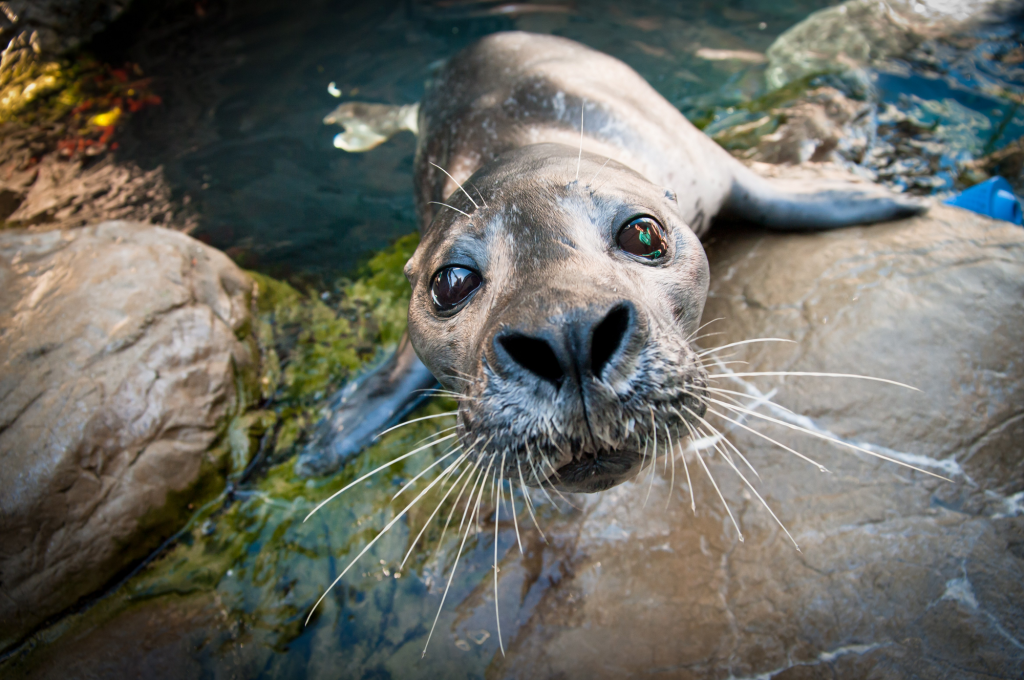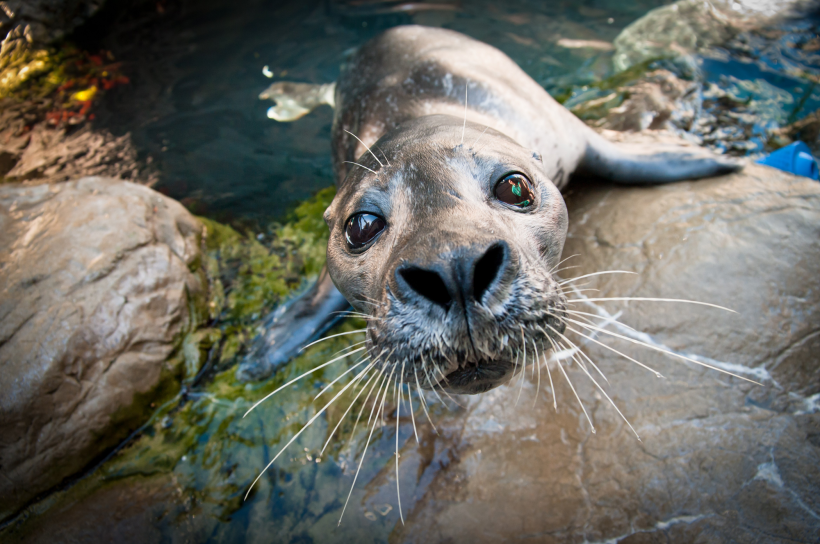
The common Harbor Seal is perhaps one of the most well-recognized marine mammals here on the West Coast of the United States of America…luckily for us here at EAF, they are also one of the most photographed, making it all too easy to find a good picture to feature in this post. As adorable as these creatures of the sea may be, their looks are not the reason for this post; instead, today we want to focus on just one of the many fascinating attributes that makes them the highly capable & extremely efficient undersea experts that they are. Their whiskers. Yep, that’s right, those pointy things that jut out like stray hairs from a beard. Now, when we could talk about their many means of thermoregulation, their ability to dive up to 1,500 ft & remain submerged for up to 40 minutes (for Pacific Harbor Seals), their uncanny ability to perform impressively agile maneuvers, & their advanced levels of cognition, why would we choose to talk about their whiskers? Afterall, it would likely not surprise you to hear that theses seals use their whiskers to “feel out” their surroundings, but the way in which they do this & exactly how well they can do this just might. A study taking place in the Mechanical Engineering department of MIT has been focusing on using large-scale models of these whiskers to gain a better understanding of how they interact with their environment, & what the research team has been finding is quite surprising. As it turns out, not only do the whiskers allow the seals to be more alert to their surroundings, but they can actually allow the seals to pick up the exact path of an object that passed by up to 30 seconds earlier & (as a previous study at the University of Bochum, Germany suggests) from as far off as 600 feet! Imagine dunking into the ocean, closing your eyes, covering your ears, and still being able to precisely track a fish that swam by you half a minute ago & is now up to two football fields away, not to mention being able to tell the size & shape of the fish. Let that sink in for a second.
Pretty cool, right? But enough with the results, let’s get to the method. When an object (such as a fish) passes through the water, it necessarily forces the surrounding liquid out of its way as it passes through. This water will flow alongside of the object until the object has fully passed through the original volume of water, allowing the disturbed water to regroup. Now, it would be one thing if the water simply hugged the object tightly, closely followed along the length of the object, and then came right back into stable contact with itself after the object had passed, but this is not how the world of fluid dynamics generally works. More often than not, the disturbance associated with the object moving through the water will lead to turbulence in the flow & thus the introduction of disorder, increased momentum & heat transfer, & chaotic variation in flow properties. In simpler terms, the flow left behind after the object has passed is very irregular & quite erratic. Now, one critical feature of this turbulence is the existence of multi-scale vortex interaction…many vortices of different scales are formed within the flow & leave a highly vortical turbulent wake behind this object. Now this turbulent wake will eventually mostly die out from viscous (or friction-like) interaction with the surrounding water, but the hydrodynamic trail left in this wake can exist for quite some time (albeit very weakly). The whiskers of the seals are quite amazing from a materials point of view & when they encounter the vortices left behind in the wake, the whiskers will vibrate at the same frequency as that associated with the wake turbulence, even when the seal itself is in motion. Perhaps the key take-away from that last sentence is the last few words…even if they seal itself is maneuvering about, its whiskers will still vibrate at a the same frequency as the trail the seal is tracking.
This is actually quite profound, after all, the seal itself is moving through the water & its whiskers are definitely moving through the water, and so both the seal & its whiskers ought to be producing enough in the way of self-generated vortices to almost completely invalidate their ability to pick out a turbulent trail in the mess of their own turbulent flow noise. However, the whisker system strikes the perfect balance between material compliance (allowing for the whiskers to oscillate with the turbulence), geometry (rather than being straight, the whiskers are actually shaped perfectly as sine waves), and ability to precisely control the whiskers (keeping them perfectly still relative to the flow even when the seal is moving). What do you get when you combine all these things? The perfect biosensing machine! Not only are the seals experts at using their whiskers to attenuate (reduce) their own flow noise, but also to track objects from long distances off, long after they passed, without ever seeing them. These seals are truly pretty amazing creatures & would likely be your worst nightmare in a game of hide & seek. A while back, we suggested that dogs’ noses make them the unsung superheros of the land, perhaps we can say the same about seals for the sea!

